Water Is One Of Those Strange Materials That Expands When It Freezes, Which Raises An Interesting Question:



Water is one of those strange materials that expands when it freezes, which raises an interesting question: what happens to a water drop that freezes from the inside out? A freezing water droplet quickly forms an ice shell (top image) that expands inward, squeezing the water inside. As the pressure rises, the droplet develops a spicule – a lance-like projection that helps relieve some of the pressure.
Eventually the spicule stops growing and pressure rises inside the freezing drop. Cracks split the shell, and, as they pull open, the cracks cause a sudden drop in pressure for the water inside (middle image). If the droplet is large enough, the pressure drop is enough for cavitation bubbles to form. You can see them in the middle image just as the cracks appear.
After an extended cycle of cracking and healing, the elastic energy released from a crack can finally overcome surface energy’s ability to hold the drop together and it will explode spectacularly (bottom image). This only happens for drops larger than a millimeter, though. Smaller drops – like those found in clouds – won’t explode thanks to the added effects of surface tension. (Image credit: S. Wildeman et al., source)
More Posts from Hannahhaifisch and Others





Fluorite and Baryte
Locality: Berbes, Asturias, Spain

David Spriggs, Dark Matter.

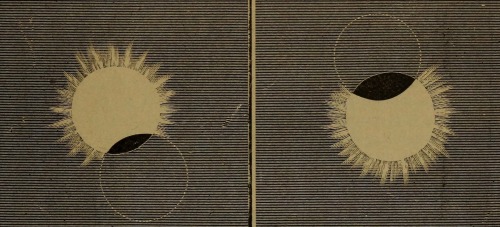
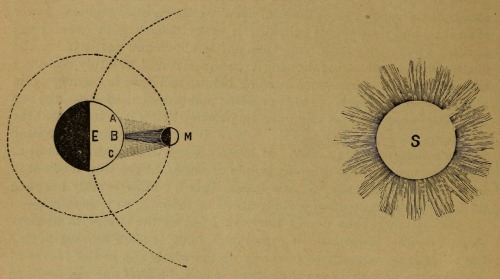


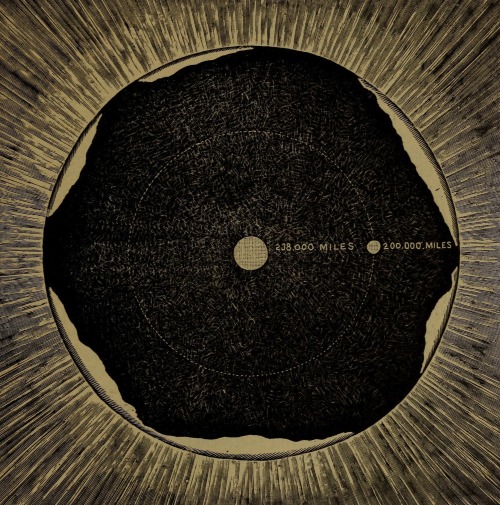

Samuel W. Hall. Corona of an Eclipse, Moon Hiding Lower and Upper Limb of Sun, Eclipse of the Sun, Moon Hiding Upper and Lower Limb of Sun, Comparative Size of the Planets, Size of the Sun, Elliptical Orbit. Sunshine and Moonlight; with; also, a Flash of Comets, Meteors and Shooting Stars, and a Twinkle of Starlight. 1889. Contd from here

Brookite
Locality: Kharan, Baluchistan, Pakistan


2017 May 6
Galaxy Cluster Abell 370 and Beyond Image Credit: NASA, ESA, Jennifer Lotz and the HFF Team (STScI)
Explanation: Some 4 billion light-years away, massive galaxy cluster Abell 370 only appears to be dominated by two giant elliptical galaxies and infested with faint arcs in this sharp Hubble Space Telescope snapshot. The fainter, scattered bluish arcs along with the dramatic dragon arc below and left of center are images of galaxies that lie far beyond Abell 370. About twice as distant, their otherwise undetected light is magnified and distorted by the cluster’s enormous gravitational mass, dominated by unseen dark matter. Providing a tantalizing glimpse of galaxies in the early universe, the effect is known as gravitational lensing. A consequence of warped spacetime it was first predicted by Einstein a century ago. Far beyond the spiky foreground Milky Way star at lower right, Abell 370 is seen toward the constellation Cetus, the Sea Monster. It is the last of six galaxy clusters imaged in the recently concluded Frontier Fields project.
∞ Source: apod.nasa.gov/apod/ap170506.html

Physicists Confirm Quantum Theory Proposed in 1930s
http://www.sci-news.com/physics/quantum-tunneling-water-05422.html

0063

“XYZ I” by ale_beber_origami http://flic.kr/p/TiaETp
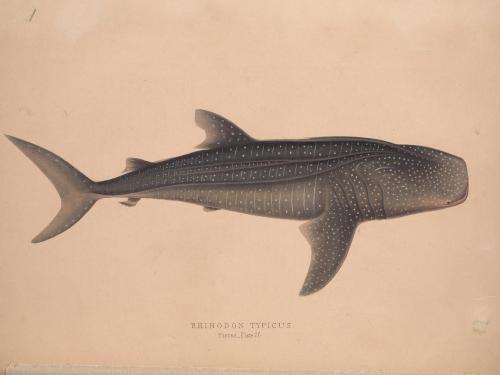




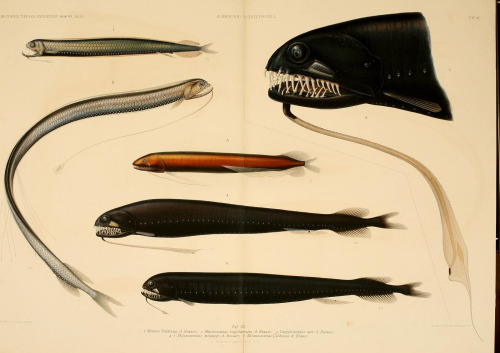
June 8th is World Oceans Day - a day to celebrate the oceans that connect and sustain all of us. Our colleagues at the Biodiversity Heritage Library have been leading up to today with a series of blog posts exploring historic publications that mark important milestones in the progress of marine bioscience research and ocean exploration.
Top image: Whale shark from Illustrations of the zoology of South Africa… v.4 (1845) Middle top : radiolarians and jellyfish from Ernst Haeckle’s Kunstformen der Natur (1904) Middle bottom: giant squid from Cassell’s Natural History v.5-6 and cuttlefish from Voyage de la corvette l'Astrolabe Mollusques and Zoophytes Atlas (1833) Bottom: deep sea fish from Valdivia Expedition…1898-1899. Bd. 15, T. 1
-
 techjum reblogged this · 4 years ago
techjum reblogged this · 4 years ago -
 hellisstyless reblogged this · 6 years ago
hellisstyless reblogged this · 6 years ago -
 astromaes liked this · 7 years ago
astromaes liked this · 7 years ago -
 sohowareyoudo99 liked this · 7 years ago
sohowareyoudo99 liked this · 7 years ago -
 dvvyv liked this · 7 years ago
dvvyv liked this · 7 years ago -
 untheredsoul-blog liked this · 7 years ago
untheredsoul-blog liked this · 7 years ago -
 placidius reblogged this · 7 years ago
placidius reblogged this · 7 years ago -
 fluidity reblogged this · 7 years ago
fluidity reblogged this · 7 years ago -
 mrkosmojo liked this · 7 years ago
mrkosmojo liked this · 7 years ago -
 hanacy reblogged this · 8 years ago
hanacy reblogged this · 8 years ago -
 cuhbwaafol-blog liked this · 8 years ago
cuhbwaafol-blog liked this · 8 years ago -
 the-nomadic-writer reblogged this · 8 years ago
the-nomadic-writer reblogged this · 8 years ago -
 americanmissilecrisis liked this · 8 years ago
americanmissilecrisis liked this · 8 years ago -
 nebularrr liked this · 8 years ago
nebularrr liked this · 8 years ago -
 theres-no-wifi-here liked this · 8 years ago
theres-no-wifi-here liked this · 8 years ago -
 la-roms liked this · 8 years ago
la-roms liked this · 8 years ago -
 heyitsspider reblogged this · 8 years ago
heyitsspider reblogged this · 8 years ago -
 sphynx823 liked this · 8 years ago
sphynx823 liked this · 8 years ago -
 theonlyleftydesk reblogged this · 8 years ago
theonlyleftydesk reblogged this · 8 years ago -
 golden-poppy-crafts liked this · 8 years ago
golden-poppy-crafts liked this · 8 years ago -
 ghoulroyalty liked this · 8 years ago
ghoulroyalty liked this · 8 years ago -
 artemisia-at-salamis reblogged this · 8 years ago
artemisia-at-salamis reblogged this · 8 years ago -
 heptafluoride liked this · 8 years ago
heptafluoride liked this · 8 years ago -
 infomaztic reblogged this · 8 years ago
infomaztic reblogged this · 8 years ago -
 caro-the-fox liked this · 8 years ago
caro-the-fox liked this · 8 years ago -
 ruizhi reblogged this · 8 years ago
ruizhi reblogged this · 8 years ago -
 maerth19-blog liked this · 8 years ago
maerth19-blog liked this · 8 years ago -
 suburbanspaceinvader reblogged this · 8 years ago
suburbanspaceinvader reblogged this · 8 years ago -
 shmoo92 liked this · 8 years ago
shmoo92 liked this · 8 years ago -
 sixthrangerknight reblogged this · 8 years ago
sixthrangerknight reblogged this · 8 years ago -
 nelc liked this · 8 years ago
nelc liked this · 8 years ago -
 ca314159bara liked this · 8 years ago
ca314159bara liked this · 8 years ago -
 rosypapatella liked this · 8 years ago
rosypapatella liked this · 8 years ago -
 anchodebasto liked this · 8 years ago
anchodebasto liked this · 8 years ago -
 17041703-blog reblogged this · 8 years ago
17041703-blog reblogged this · 8 years ago -
 17041703-blog liked this · 8 years ago
17041703-blog liked this · 8 years ago -
 kenzotrufi liked this · 8 years ago
kenzotrufi liked this · 8 years ago -
 divagonzo reblogged this · 8 years ago
divagonzo reblogged this · 8 years ago -
 segredosdodiariosecreto liked this · 8 years ago
segredosdodiariosecreto liked this · 8 years ago -
 no-name-adm reblogged this · 8 years ago
no-name-adm reblogged this · 8 years ago -
 jungwildeandfree reblogged this · 8 years ago
jungwildeandfree reblogged this · 8 years ago -
 ruizhi liked this · 8 years ago
ruizhi liked this · 8 years ago -
 mcfrsh liked this · 8 years ago
mcfrsh liked this · 8 years ago